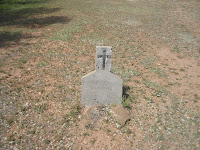Hi, I'm Lisa, here's where I come to share music. It's THE gift that keeps on giving, It knows how you feel, always. I'll also throw in some tasteless humor, and maybe a game or two. Let me know what you like, and what you don't.....You can also reach me at lisalane6349@gmail.com
Saturday, April 30, 2016
Killdeer....House Hunting....Nesting
Yesterday, while out looking at property, Ken and I came across this bird in a driveway.....it would not move..it's feathers became ruffled and it chirped, squawked, at us rather loudly the closer we got. I went back to the truck and grabbed my camera and took a few pictures. When we were leaving Ken took a closer look, and he saw eggs..she was nesting....I could not see them...until I blew up the photo's on the computer.....here are the results...so exciting to me....: ) Here is also some info on the bird.
The killdeer is a medium-sized plover. The adults have a brown back and wings, a white belly, and a white breast with two black bands. The rump is tawny orange. The face and cap are brown with a white forehead. The eyering is orange-red. Wikipedia
Scientific name: Charadrius vociferus
I really hate that I cut off her tail feathers...but I was
really trying to see the eggs...and I couldn't while taking
the photo's....so I just zoomed in as close to where Ken
said they were and took the last couple pics. Maybe I will
do better next time. But I see the eggs now!
So Cool!
Behavior[edit]
They are migratory in northern areas and winter as far south as northern South America. They are rare vagrants to western Europe, usually late in the year.
These birds forage for food in fields, mudflats, and shores, usually by sight. They mainly eat insects. In built up areas they will forage in large parking lots. If those lots are well lit, they may forage at night.
Their name comes from their frequently heard call. These birds will frequently use adistraction display ("broken-wing act") to distract predators from their nests. This involves the bird walking away from its nesting area holding its wing in a position that simulates an injury and then flapping around on the ground emitting a distress call. The predators then think they have easy prey and are attracted to this seemingly injured bird and away from the nest. If the parent sees that a potential predator is not following them, they will move closer and get louder until they get the attention of the predator. This is repeated until the predator is far from the nest, and the killdeer suddenly "heals" and flies away.[14][16]
Their ability to exploit a wide range of agricultural and semi-urban habitat has helped keep them common and widespread in their range.
Subscribe to:
Posts (Atom)






















































